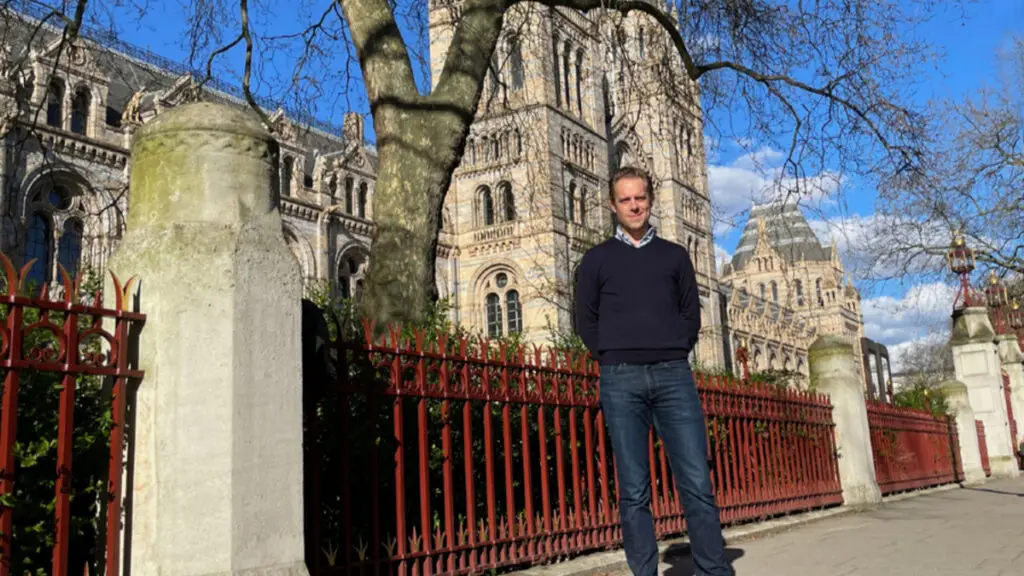The Natural History Museum in London is currently undergoing a significant restoration project. The iconic Waterhouse Building, a 19th-century architectural masterpiece, is the focus of this £20 million effort. Central to the renovation is the use of Yorkshire-made linseed paint to restore the building’s original cast iron windows.
The specialist team, led by Avanti Architects, chose Brouns & Co’s traditional linseed paint for its historical accuracy and sustainability. CEO Michiel Brouns and his firm bring their extensive expertise in conservation to ensure the project adheres to the museum’s original specifications. This approach not only preserves the architectural integrity but also promotes environmental responsibility.
Historic Renovation Project
The Natural History Museum in London, a 19th-century architectural marvel, is undergoing a significant restoration. The museum’s landmark Waterhouse Building is in its latest phase of a £20 million renovation. Central to this effort is the use of Yorkshire-made linseed paint to restore the building’s hundreds of original cast iron windows.
This linseed paint, manufactured by Brouns & Co in Sherburn in Elmet, Yorkshire, is celebrated for its historical accuracy and sustainability. Brouns & Co was chosen to be part of a specialist team led by Avanti Architects, tasked with this meticulous restoration. Their contribution ensures that the renovation adheres to the building’s original specifications.
The Role of Traditional Linseed Paint
Brouns & Co’s linseed paint plays a crucial role in this project. According to CEO Michiel Brouns, the paint’s wicking properties are vital. It allows humidity to evaporate rather than trapping moisture, unlike modern plastic-based paints. This makes it a suitable and historically accurate choice for the restoration.
Michiel Brouns, an expert in conservation, remarked, “In Scandinavia, original coats of linseed paint have endured on houses for more than 500 years.” This longevity highlights the paint’s protective qualities against weather and time. The choice of linseed paint is essential for preserving the museum’s architectural integrity.
Fiona Lamb, director of Avanti Architects, emphasised the importance of using the correct materials in conservation work. She stated, “Paint is so often the key to protecting and extending the life of materials like timber and metal.” Using Brouns & Co’s traditional linseed paint, made by grinding powder pigments into boiled linseed oil, helps avoid the potential disasters associated with modern synthetic paints.
Environmental and Historical Accuracy
The use of linseed paint is not just about preservation, but also about environmental responsibility. Modern paints contain plastics, synthetic pigments, and drying agents, which can harm both the building and the environment. Brouns & Co’s linseed paint, conversely, is made with natural ingredients, including zinc oxide instead of lead as a mould inhibitor and a combination of zinc white and titanium dioxide for efficacy.
This formulation ensures the paint is safe for the environment, enhances protection, and provides a durable finish. It is specifically designed to work well with wood and metal, making it an ideal choice for the museum’s cast iron windows.
Brouns & Co’s Expertise
Since moving to the UK in 2006, Michiel Brouns has established Brouns & Co as a leader in the field of historic building conservation. His background in restoring historic buildings in the Netherlands significantly contributes to the firm’s ability to undertake such prestigious projects.
Brouns & Co collaborates with architectural practices worldwide, earning a solid reputation for its specialised knowledge and quality products. Their client list includes high-profile projects like Chatsworth House and the Duke of Westminster’s Grosvenor Estate.
In addition to the UK, Brouns & Co is expanding its reach internationally. The company is securing new orders from the US, where linseed paint is helping to solve conservation issues for historic wooden buildings on the East Coast.
Importance of Correct Paint Selection
Using the right paint is crucial for the longevity and preservation of historic buildings. Fiona Lamb asserted, “The wrong paint can be disastrous for both the building and the environment.” The traditional method used by Brouns & Co involves grinding powder pigments into boiled linseed oil, ensuring historical accuracy and effectiveness.
In the 1880s, when the Natural History Museum was built, such methods were standard. Incorporating these traditional techniques in the renovation ensures the building’s authenticity is maintained, while also benefiting from advancements in paint formulation.
Impact on the Conservation Sector
Brouns & Co’s involvement in the Natural History Museum project signifies their growing influence in the conservation sector. The firm’s commitment to using historically accurate and environmentally friendly materials places it at the forefront of sustainable conservation practices.
This project sets a benchmark for future renovations of historic sites, demonstrating the importance of both historical fidelity and modern environmental considerations. Their approach is likely to inspire other conservation efforts both in the UK and internationally.
A Collaborative Effort
The restoration of the Waterhouse Building is a collaborative effort involving various experts in conservation and architecture. Avanti Architects leads this team, ensuring that each aspect of the restoration is managed with care and precision.
The use of Yorkshire-made linseed paint in the Natural History Museum’s restoration underscores the importance of traditional, sustainable materials. These methods not only preserve the architectural integrity of historic buildings but also offer environmental benefits. As more conservation projects worldwide take note, Brouns & Co’s approach could set a new standard in the field. The collaboration of experts in this project exemplifies the careful balance between historical fidelity and modern environmental considerations.
The success of this renovation project illustrates the potential of traditional materials in modern conservation efforts. Linseed paint’s historical accuracy and environmental benefits make it an ideal choice for preserving the cultural heritage embodied in buildings like the Natural History Museum. The efforts of Brouns & Co and Avanti Architects highlight the role of innovation in the preservation of history.


